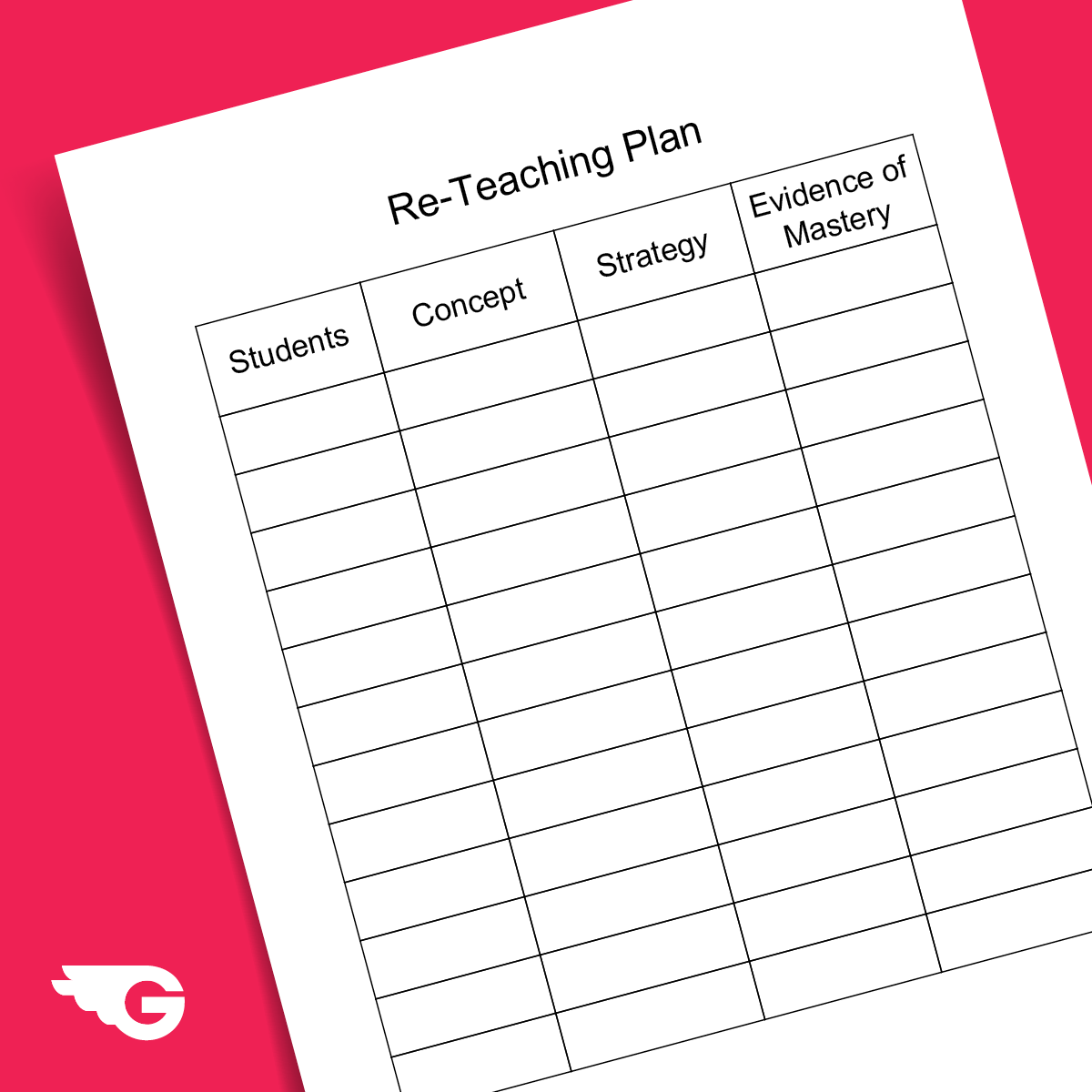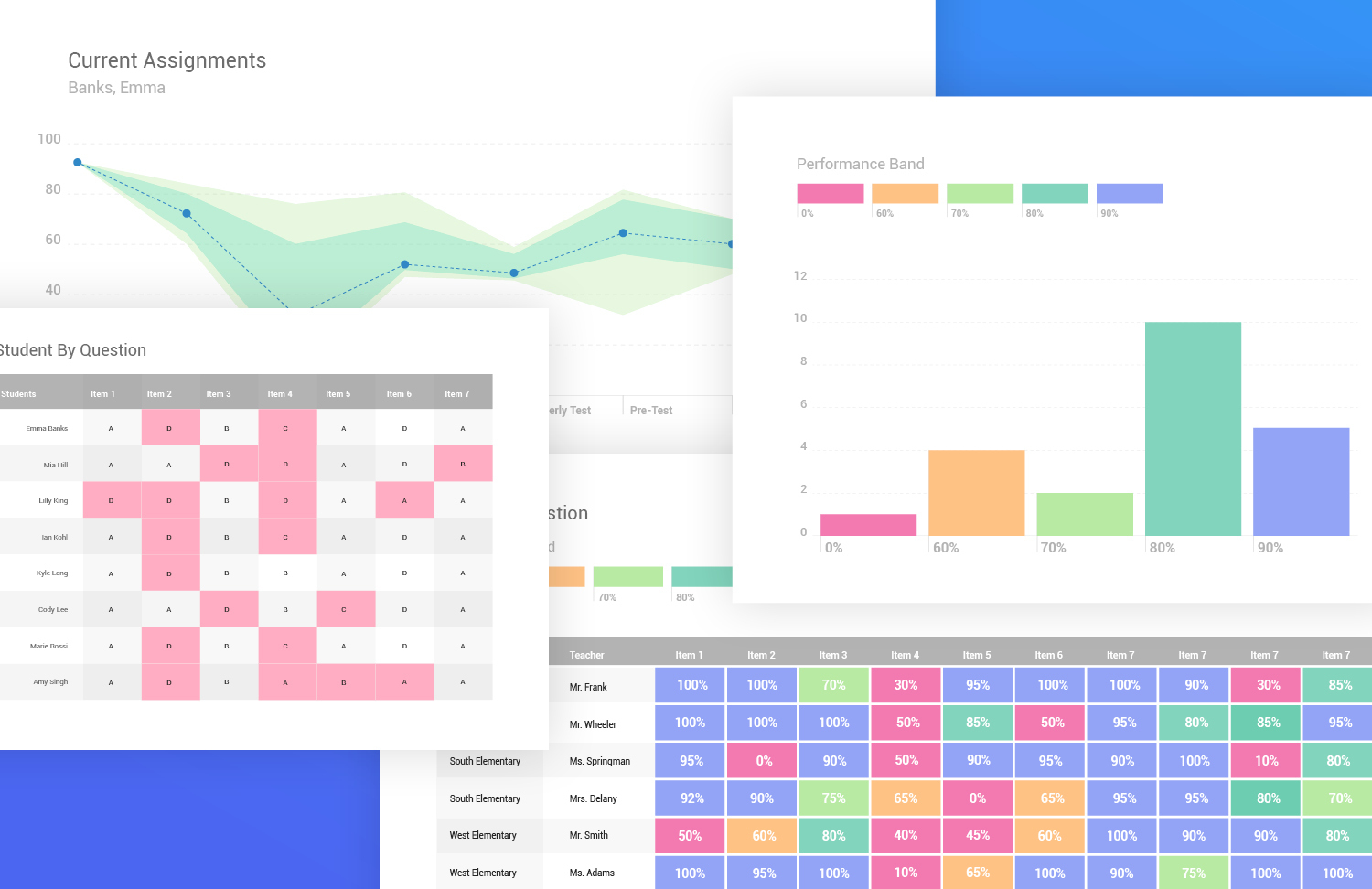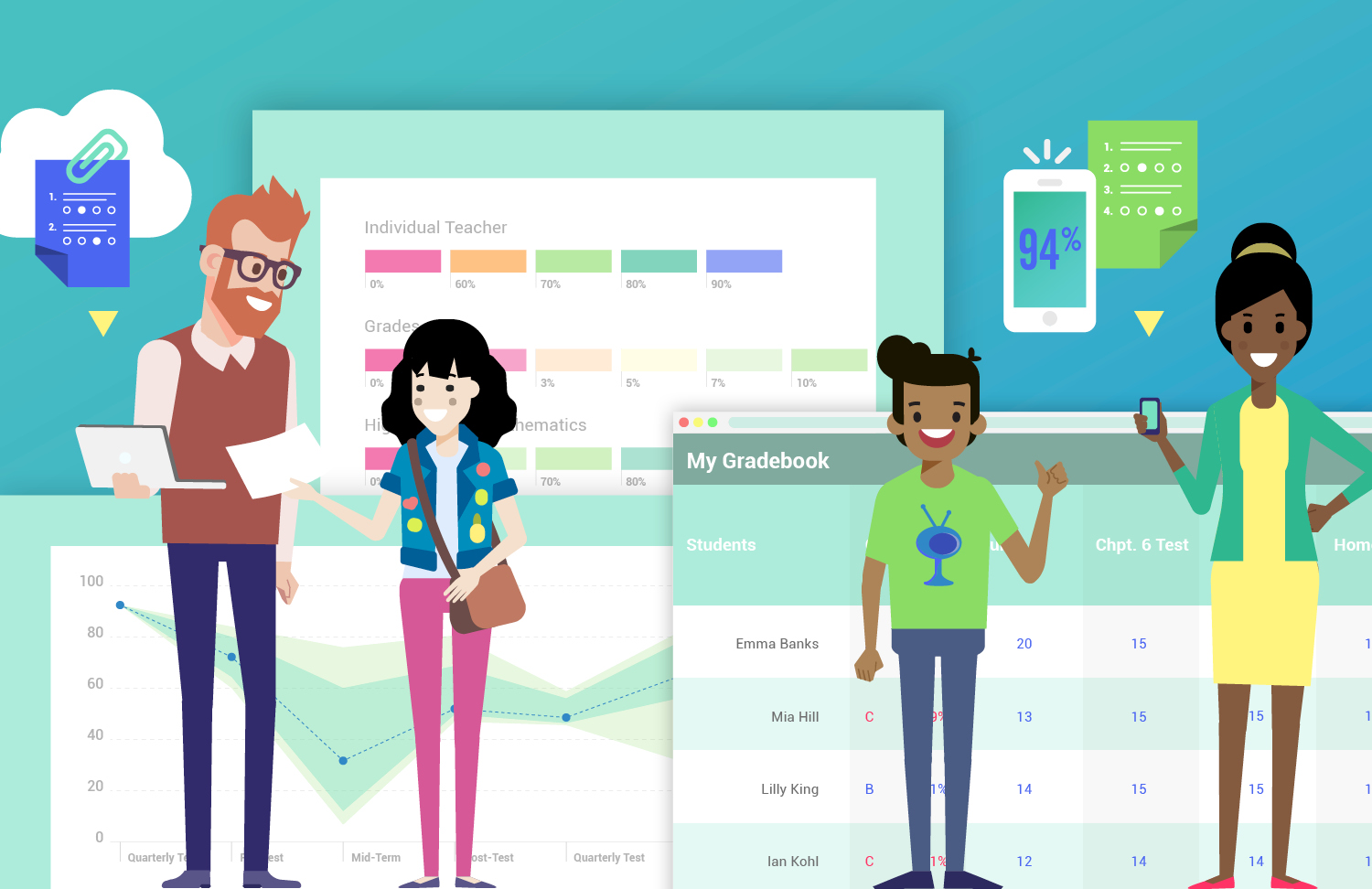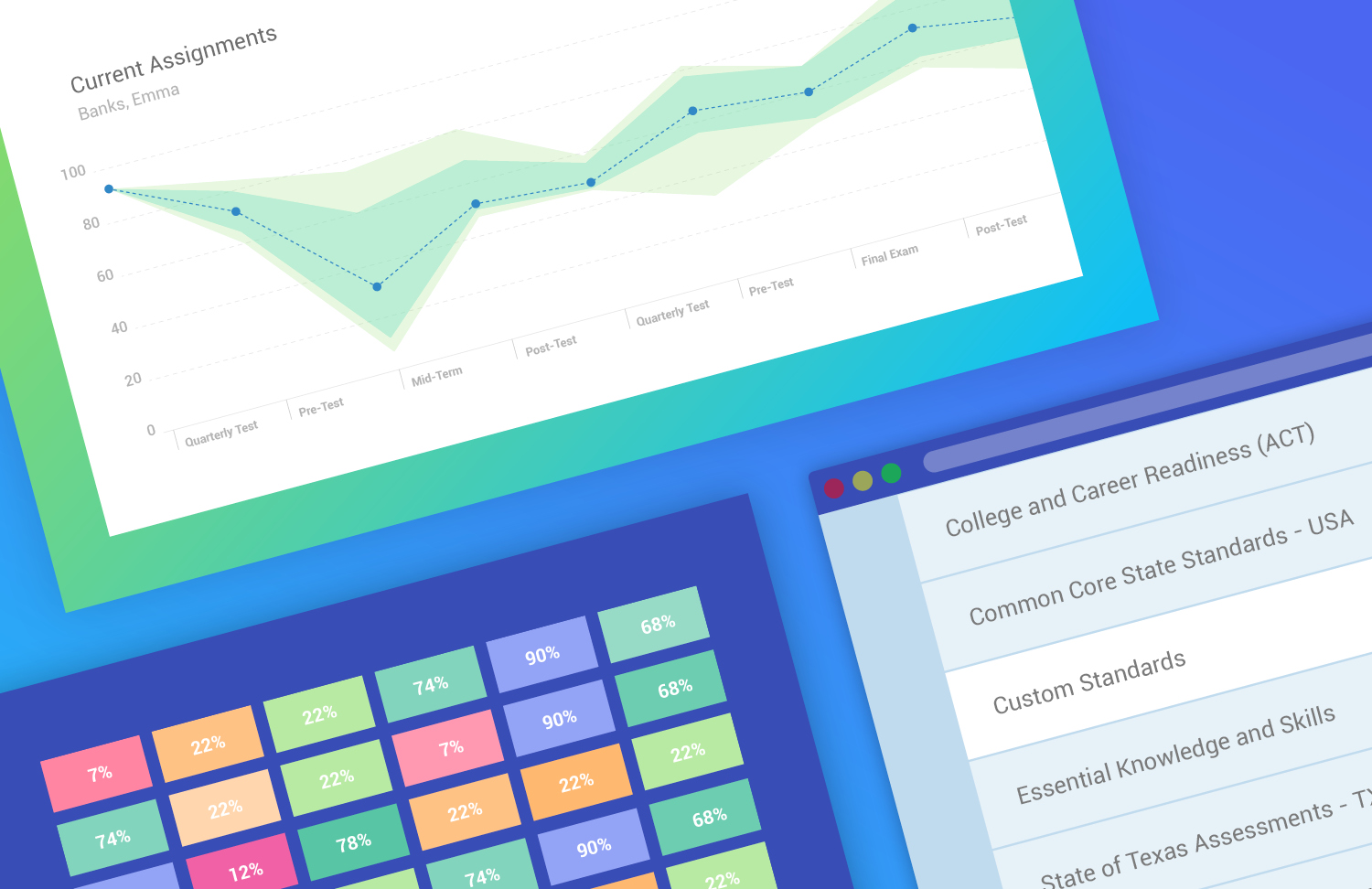What Does Analyzing Student Data Really Mean?
Teachers are being told to gather a ton of data, but what should they do next?
We asked Jessica Lane, an educational data coach and consultant, to give teachers some simple-to-follow next steps for analyzing and acting on all that data. Following is her advice:
Don’t Be Scared
Numbers are scary. They always have been. Add in the judgment of educators that surrounds student data like a dark cloud, and you’ve got a tough conversation.
But there’s no denying the power of collecting and analyzing student data. And with technology where it is today, the collecting part is easy. Gradient has that part covered.
You can build a response form in Gradient to match the next class assignment and link each question to standards, helping with additional data gathering. With a quick scan of your phone or any device with a camera, Gradient will grade it.
The struggle is in determining next steps (and I’m not referring to the “self-care” plans you’ve made for that evening). So, what am I talking about?
The Next Steps
You give an assessment. You see the data. You’re not thrilled and you need a plan. Here’s the deal. This isn’t going to be easy. It’s not going to be quick. Like with any great habit, it takes time to build. But with practice, it becomes easier. And faster. So grab some assessment data, a pencil, some paper, and a glass of “self-care.”
Side note: If you’re anything like me, you’ll want to substitute the pencil and paper with a really pretty spreadsheet – that will do.
Let’s build a plan.
Part I: Determining Student Strengths and Weaknesses
Start with the positive.
1. What concepts have the majority of your students mastered? How do you know?
Don’t skip this, it’s important. These are the things you do NOT need to revisit immediately. Take these concepts off your plate for a bit. You’ve got enough to worry about.
2. What teacher actions led to the mastery of those concepts?
You’re doing great things, I promise. Give yourself a pat on the back. Was there a certain activity that worked well with your students? Take note, this will help you later on.
3. What concepts did your students struggle with? Were there common misconceptions that led to a lack of mastery? How do you know?
Let’s get specific. If several students missed the same question, was it for the same reason? Why do you think that is? Was it a lack of understanding? Was there a prerequisite skill that was assumed? Pick it apart. Find the root cause.
Gradient’s Student by Question or By Standard report can help determine specific areas that students need support. Were there questions or standards that the whole class missed? Or are there individual areas each student needs support in?
The more specific you are, the easier it will be for you to do the next step.
Part II: Re-Teaching Plan
This is when things get a little tricky. Make a table similar to the one below on your paper (or resort to the spreadsheet). Chances are, your students didn’t all miss the same question for the same reason, which means you need to… differentiate (dun dun dunnnnn). Don’t get upset, I’m not going to toss the buzz word at you and run. We are going to get through this, together.

Here we go.
Students
Under “Students,” you’re going to group your students based on common misconceptions. This does not necessarily mean that those students are going to be grouped together in the classroom. The goal is to organize the students by the type of remediation they will receive. Check back to the Student by Standard or Question Report to help group students by commonly missed areas.
Concept
Under “Concept,” you are going to add the common misconception for that group of students. Remember, specificity is key!
Strategy
Under “Strategy,” you’re going to determine what you’ll do to address the misconceptions. Stations? Small group instruction? A fun game? Manipulatives? One-on-one conferences? Warm-ups? Group work? Strategic pairing? The list goes on and on, but what you’re doing with these students should be different from what you have already done. We can’t expect different results if we are doing the same thing, right? Switch it up a bit. If you’re stuck, go back up to Part I. What did you do that worked? Can you recreate that? Still stuck? Google is your best friend.
Evidence of Mastery
Under “Evidence of Mastery,” you’ll need to determine how you will reassess these students. We need to assess students constantly, over and over again. Yep, I said it.
You know what I didn’t say? That the assessment needs to be a paper-pencil, torture-your-students-with-boredom kind of assessment. Take an oral response. Observe a conversation in a group setting. Be creative. Your students will appreciate it.
With Gradient you can customize different response forms to accompany the different activities. For example, create a rubric form to accompany a project or report or use an observation form for a class discussion using evidence.
Creating different forms within one tool allows for all the data to be brought back to one place. Link the responses to standards and track student learning growth in those standards that are being focused on.
Parting Words About the Plan
Let’s acknowledge one more thing before you get to finish that drink (coffee, right?) and prepare yourself to try again. To finish this plan, you need to figure out what the rest of the students are going to do while you are addressing those that need remediation. A more rigorous version of the activity? A different activity? Be strategic. Consider management. We all know what happens when kids get bored.
Easy, right?
No, it’s not. Let’s not pretend like anything you do is easy. Your job is a wild ride, and I’m just another random person trying to tell you how to do it. But you’ve gotten this far, so you must be ready to do something new. So get in there, try again, watch your students grow as a result of your perseverance, and give yourself some extra self-care to celebrate! You deserve it!

Jessica Lane is an educational data coach and consultant in Cincinnati, Ohio. She runs a data-centric Facebook group for educators, “Data-Day Education.” Jessica has experience as a high school math teacher and instructional coach.



